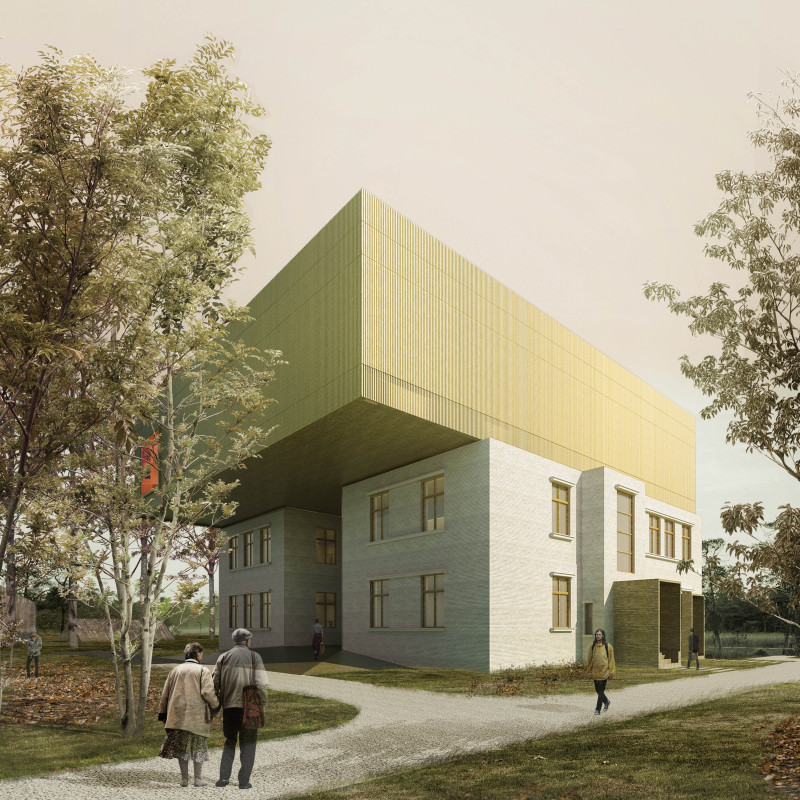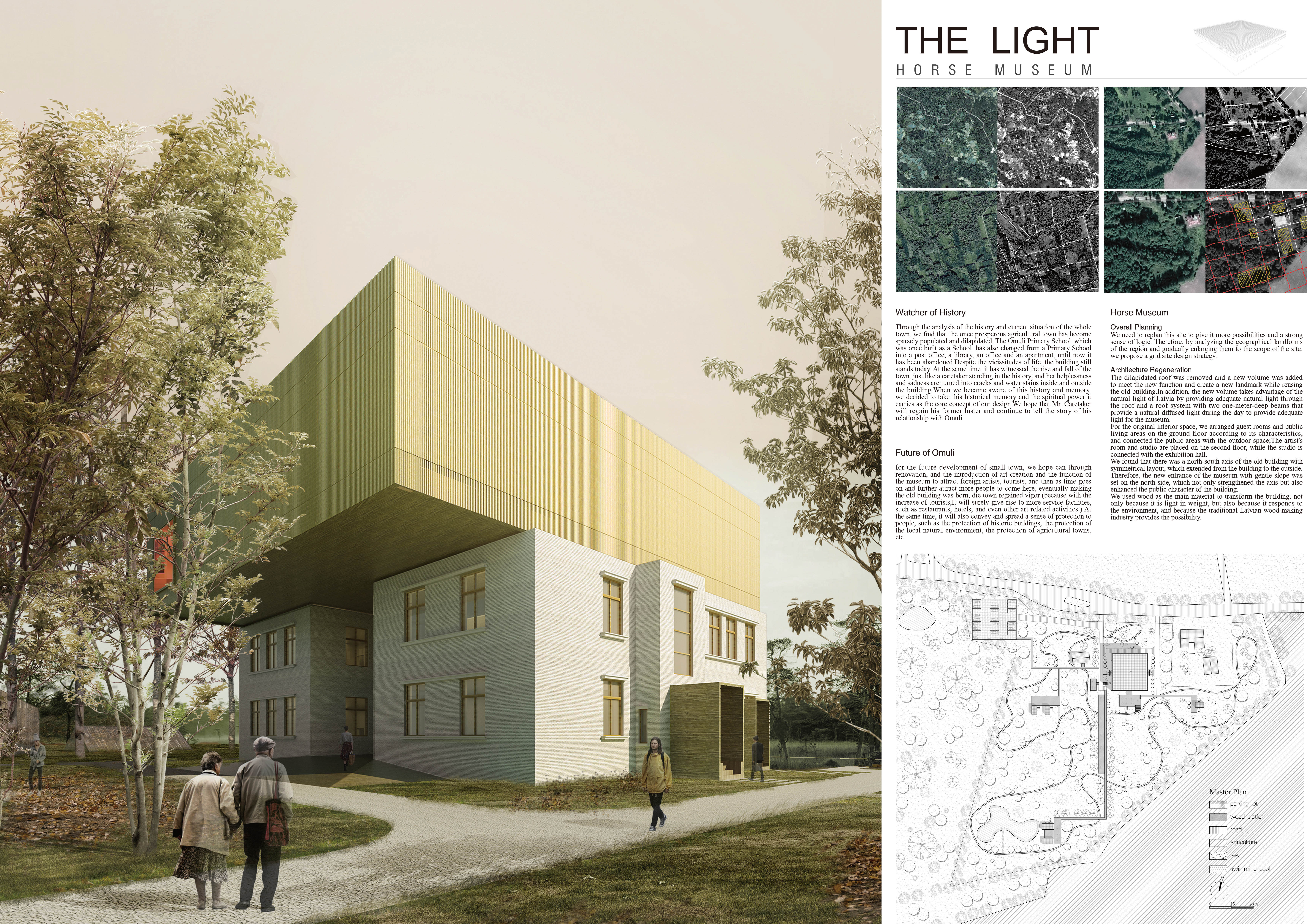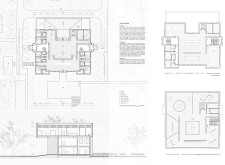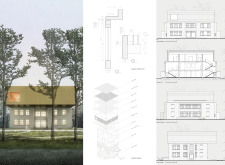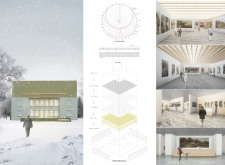5 key facts about this project
The Light Horse Museum is an architectural project designed to serve as a cultural and educational center focusing on the history and significance of horsemanship. Located in Omult, this museum is intended to resonate with the local equestrian heritage while catering to a range of community activities. The design integrates both exhibition and social spaces, creating a multifunctional environment that promotes interaction and learning.
The architectural layout distinctly separates the museum into two primary volumes. The lower volume features a brick façade, grounding the structure within its historical context. In contrast, the upper volume showcases a ribbed metal surface, introducing a contemporary aesthetic that signifies innovation and dynamism. Large windows encapsulate both sections, enhancing visibility and interaction with the outdoors, while allowing for ample natural lighting within the exhibition areas.
Unique Architectural Solutions
One of the notable aspects of The Light Horse Museum is its dual structural approach. The use of contrasting materials not only defines the building visually but also serves functional purposes. The lower brick section aids in energy efficiency and provides sound insulation, creating a conducive environment for education and engagement. The upper section's metal façade allows for flexibility in design, optimizing the building's interaction with sunlight and external environmental conditions.
Spatial organization within the museum is carefully considered. The central exhibition hall is designed to accommodate diverse exhibits, from historical artifacts to modern installations. Adjacent to this space are lecture halls and community gathering areas, reinforcing the museum’s role as a center for cultural exchange. These functional spaces are designed for adaptability, allowing for a variety of events and programs that cater to different audiences.
Material Choices and Sustainability
The choice of materials plays a crucial role in the overall sustainability approach of the museum. Brick represents durability and low maintenance, while wood is utilized in various elements to enhance indoor climate comfort. The strategic placement of glass not only connects the museum with its environment but also promotes energy efficiency through natural light utilization. The architectural design emphasizes eco-friendly practices through its structural choices and layout, aiming to reduce the carbon footprint.
Visitors can gain deeper insights into The Light Horse Museum by exploring architectural plans and sections. An examination of the architectural designs reveals how the project balances historical significance with modern architectural concepts, creating a venue that is both educational and engaging. Review the architectural ideas behind this project for a comprehensive understanding of its design intricacies and functional aspects.


